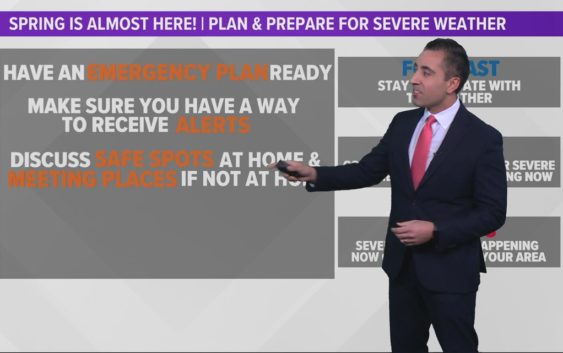- Debris from Hurricane Helene provides fuel, complicates containment for spring wildfires
- David & Nicole Tepper increase Hurricane Helene relief commitment to $750k
- David & Nicole Tepper increase Hurricane Helene relief commitment to $750k
- McDowell County wildfire spreads to 500 acres, evacuation orders in place
- Evacuations in Caldwell County due to wildfire
What's the difference between severe thunderstorm and tornado watches and warnings?

Knowing the meaning behind weather advisories can help you and your family stay safe when severe weather is in the forecast.
HOUSTON — We’re expecting severe thunderstorms late Monday into Tuesday morning that include flash flooding, large hail and tornadoes.
When severe weather is in the forecast, it’s important to know basic weather lingo.
Today we are focusing on thunderstorm and tornado safety and, most importantly, recognizing the terminology that is used to relay the threats to the public. The terms we are referencing are “watch” and “warning,” which are used to relay the possibility or likelihood of imminent severe weather.
Watch basically means “watch out.” The conditions are favorable for the development of thunderstorms that could become severe, encompassing gusty, damaging winds, large hail and the potential for even a tornado.
Warning means “take action.” If it’s a severe thunderstorm warning, you are urged to take shelter. In a tornado warning, go to an interior room — away from windows, if possible. Cover your heads with pillows, cushions or mattresses.
Stay weather aware with the KHOU 11 weather team and be ready to take action if the watch becomes a warning. You can sign up for KHOU 11 weather alerts on our mobile app.
The clash between air masses, more common in the spring, tend to favor the development of more robust thunderstorms that are more likely to become strong to severe.
Knowing this terminology could help keep you and your family safe this severe weather season.